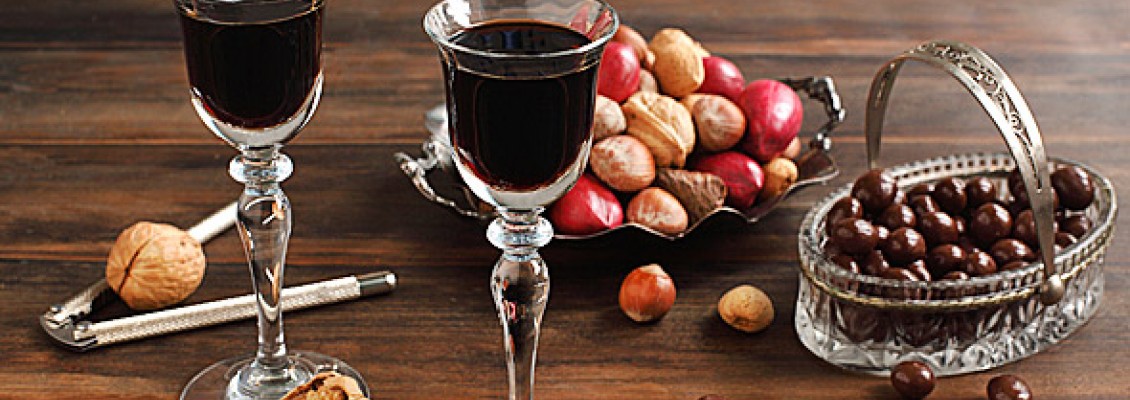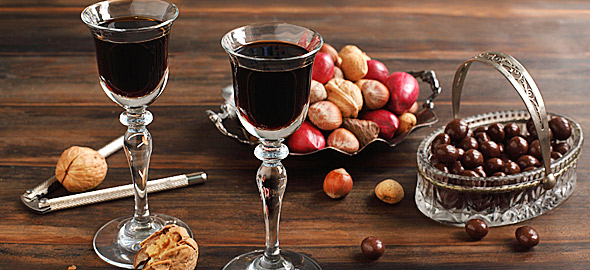A liquer story

 A Liqueur Story.
A Liqueur Story.
Herbs, flowers, spices, fruits and vegetables enrich the alcohol with their aromas. The total sweetened with sugar, and that's how the liqueurs are created.
The word liqueur comes from the latin liquefacere which means dissolve and it's reference to the dissolution of aromas and tastes in alcohol. Within the pages of history, liqueurs were displayed as pharmaceutical products that were mixed herbs dissolved in alcohol, to treat diseases and ailment of the body like malaria, menstrual pains and stomach disorders. Monks and alchemists are the registered inventors of pharmaceutical products and ancestors of today's liqueurs.
In an effort to create the elixir of life, monks produced ”medicines” from herbs that they cultivated themselves in monasteries. Some of today's herbs known for their pharmaceutical properties were very well known back then. At the same time, the extraction of their ingredients into alcohol, was also another way of maintenance. The addition of sugar was invented so that the administration and consumption would be easier and that was the step that brought the monk's and alchemist's elixirs, closer to what today is a liqueur.
Even nowadays many suggest a liqueur for curing indigestion and for boosting the human organism. It is no coincidence that Americans use the word “cordial” that means stimulant when talking about a liqueur, while the Europeans use the word “digestive”.
In producing a liqueur, a pure alcohol or a distillate, both of agricultural origin is used, or one or more spirit drinks (whiskey, rum etc.), or an alcoholic mixture of the above. The alcohol is flavoured with aromatic ingredients and finally sugar, honey or other sweeteners are added.
The production process includes the extraction of aromatic compounds in the alcohol base and the distillation of the extract. However, each company might be using different methods of processing raw materials for liqueur production. Some times only extraction is applied and some times only distillation is applied.
The extraction is made in stainless steel or wooden tanks and its duration varies depending on the material being processed as well as the technical means available.
The distillation is done in copper or stainless steel fired stills preferably with steam water baths.
Usually a double distillation is performed and the receiving product is the heart of the distillate – given that the distillation is divided into heads, heart and tail (first, middle and last part of the distillation).
Whether the final product is a result of distillation or simple extraction, sweeteners dissolved in either water or extract quantity are added. The alcohol is corrected by adding water or extract. The aroma is enhanced with the addition of extract and the liqueur's color by adding extract or natural coloring pigments as allowed within the law.
The liqueur is left for a short period of time before bottling in order for the aromatic and sapid characteristics to be combined and give a harmonic blend. Most times it gets bottled and marketed directly. There are also occasions where liqueur is left to age. We often see liqueurs in which the basic alcohol is already aged such as Cognac or Whiskey.
Bitters or Digestive Drinks:
This is a category that doesn't really belong to liqueurs as they fall short of the basic ingredient. These bitter drinks usually don't contain sugar or contain a minimum quantity and are preferably used in cocktails or other sweet drinks.
These include herb blends and are considered the best digestives often offered at the end of a meal. The Angostura and Fernet Branca are the most known drinks from this category in which the Greek Herb Spirit by Roots belongs to as well.
How to Serve Liqueurs and Bitters:
- Served in small glasses similar in shape to a cognac glass. But the old-fashioned crystal glasses that our grandmothers had, are also fine.
- Can also be served with ice cubes or crushed ice. Liqueurs that have light aromas and are not extremely sweet can be served without ice as well at room temperature.
- Combined with other less sweet drinks, juices or soft drinks to refreshing cocktails.
- As a Dinner Epilogue.
Most Popular
Mastiha and Citrus are the most popular Greek versions. However many of the big Greek distilleries, as well as many smaller producers, now produce very interesting liqueurs such as Rakomelo, Fatourada, Tentura, Rose, Lemon, Pomegranate, Olive, Tangerine and many more. Some being inspired by traditional recipes and some other innovative and original creations.